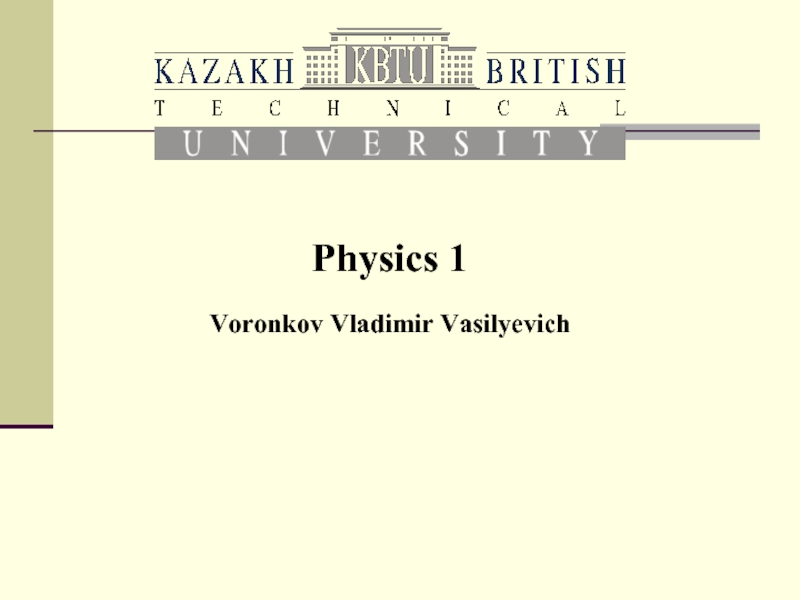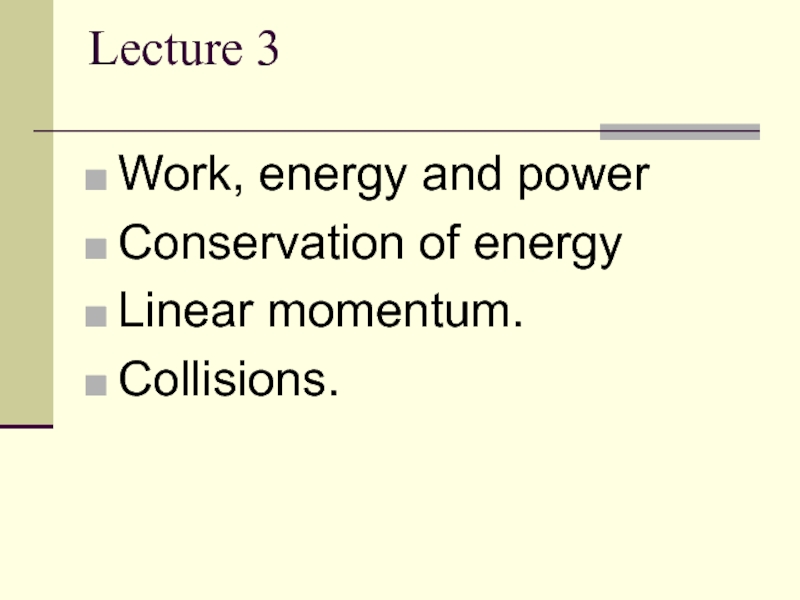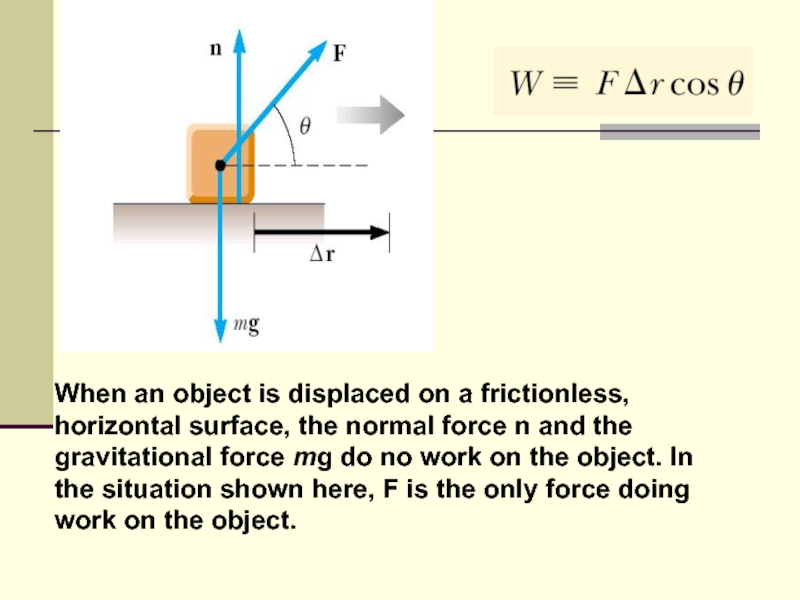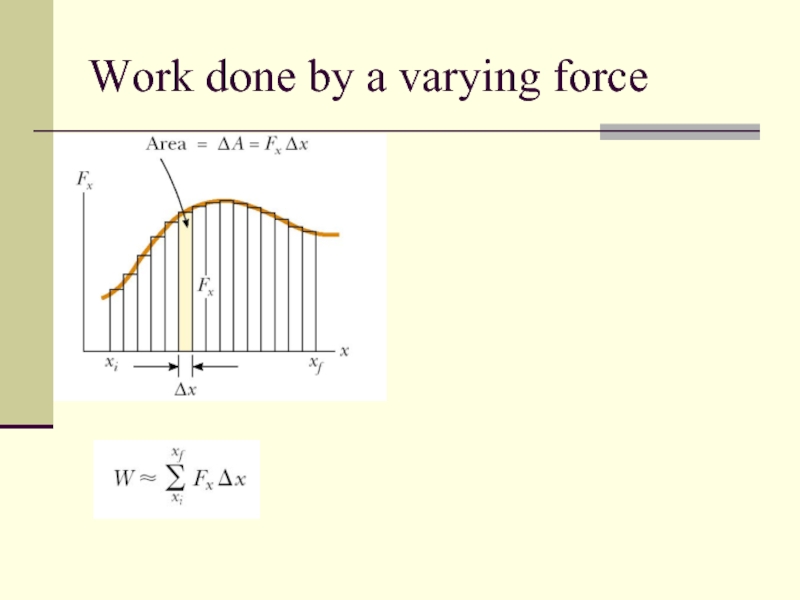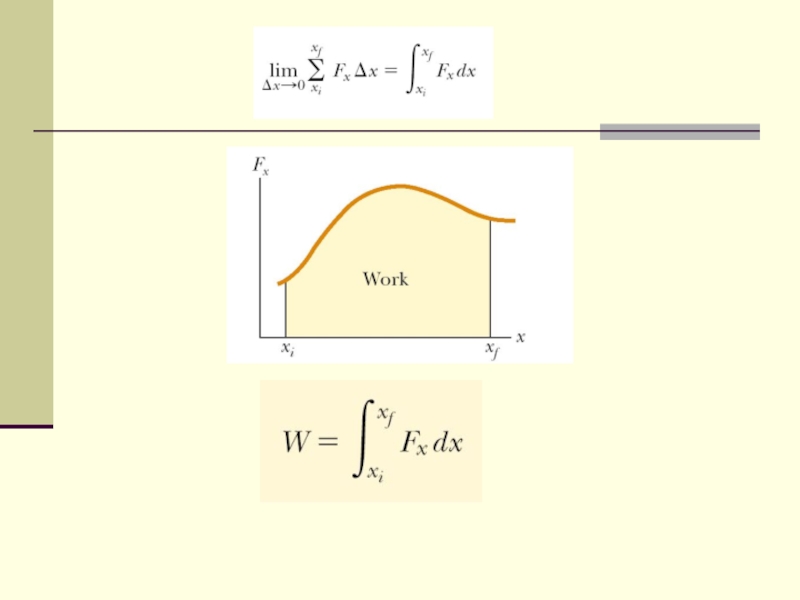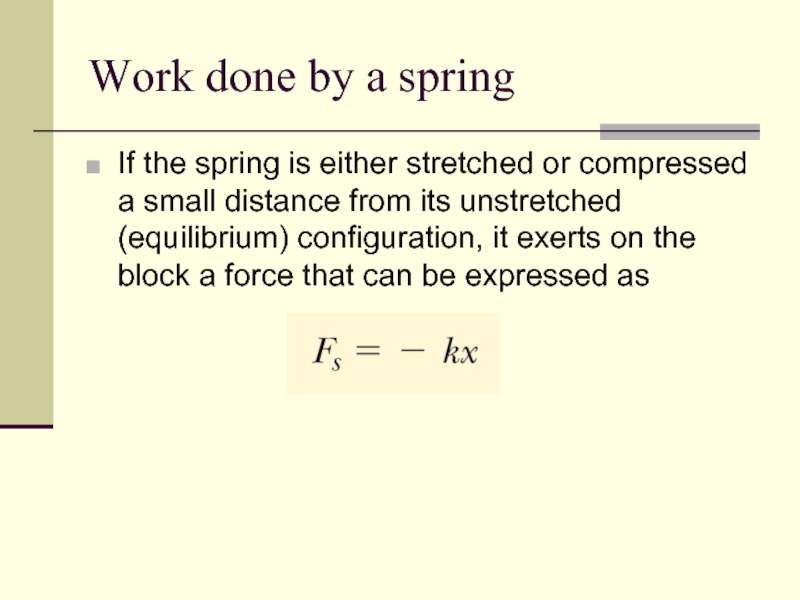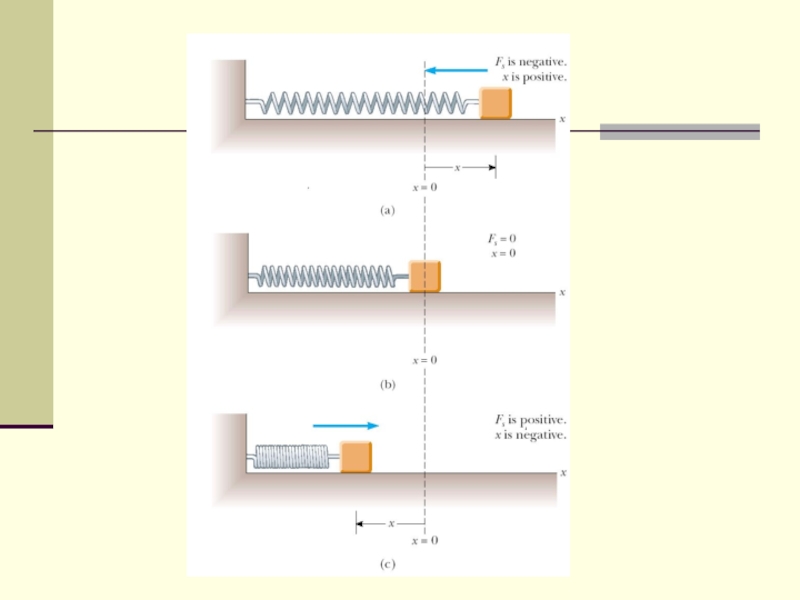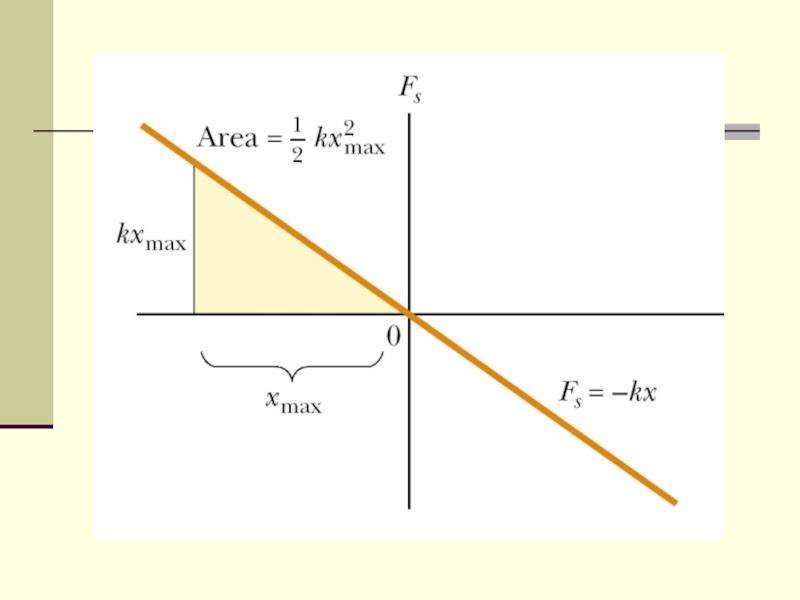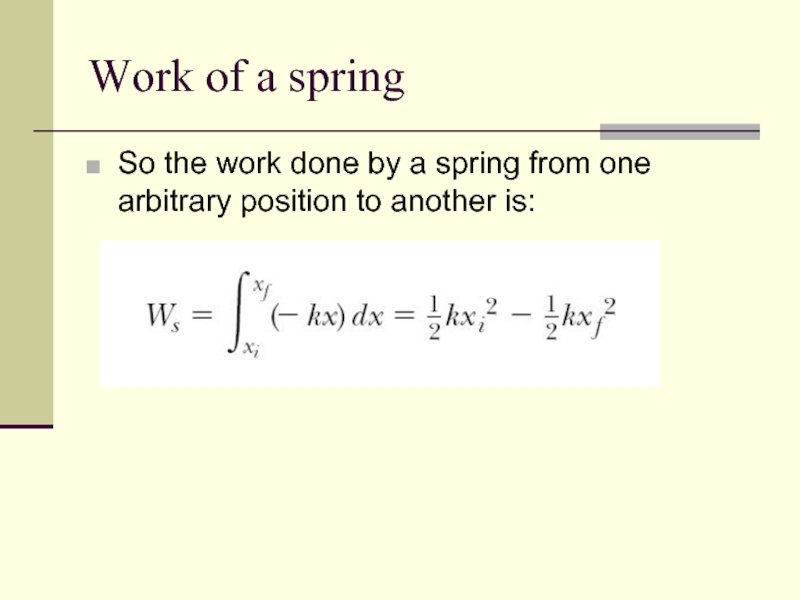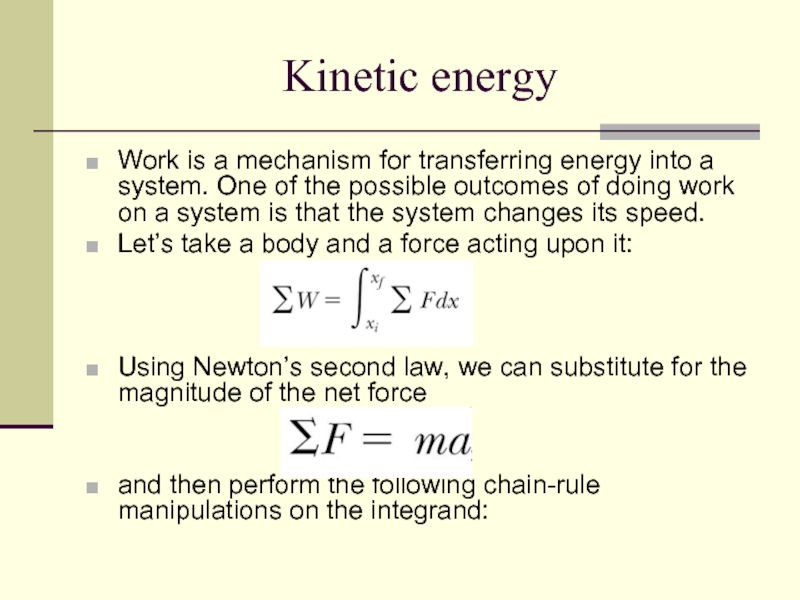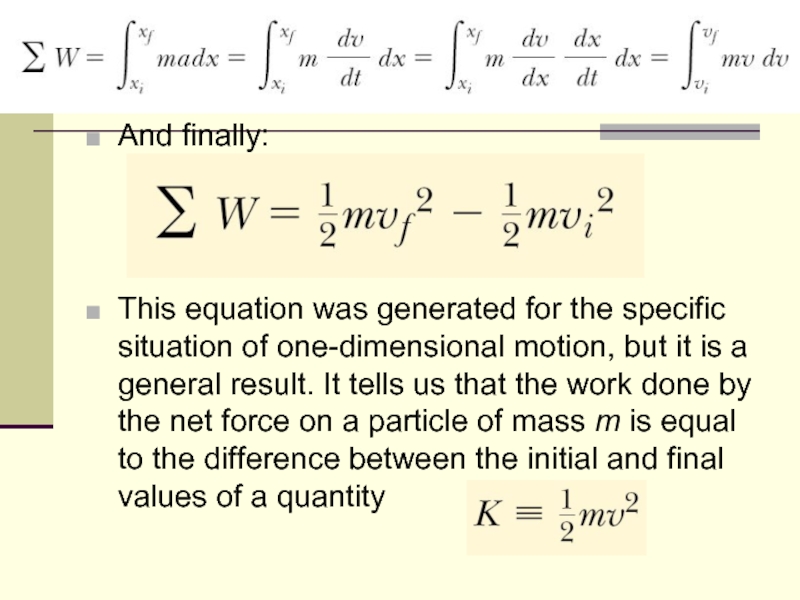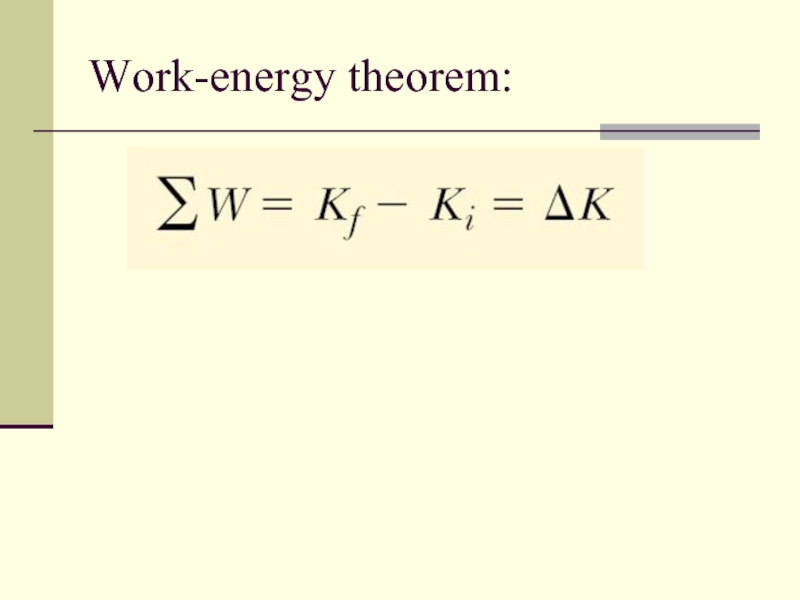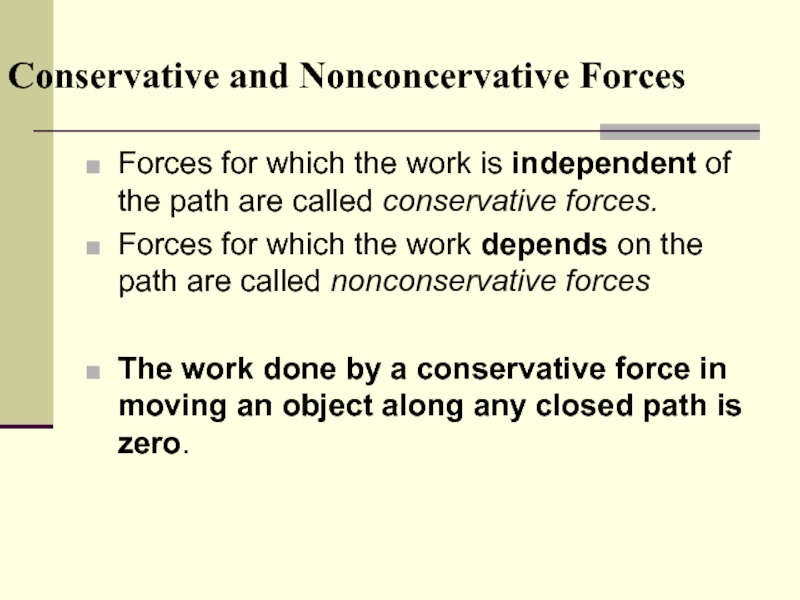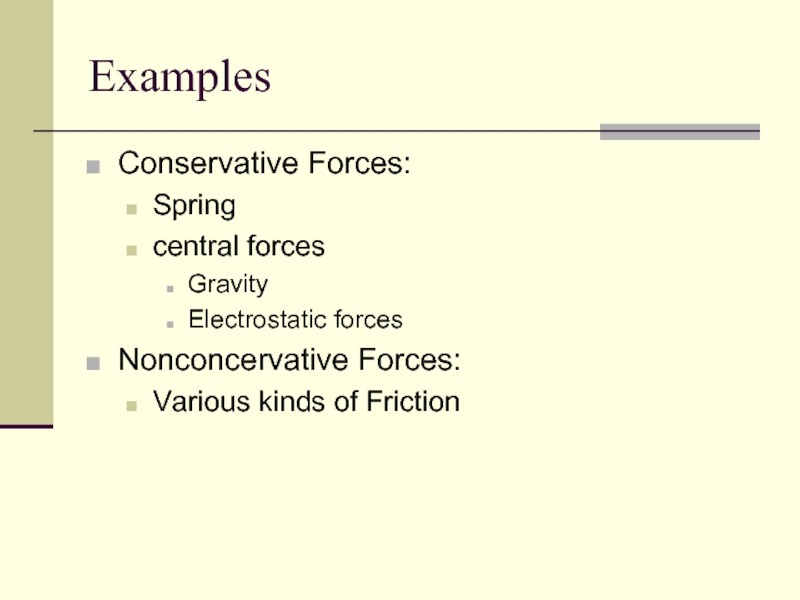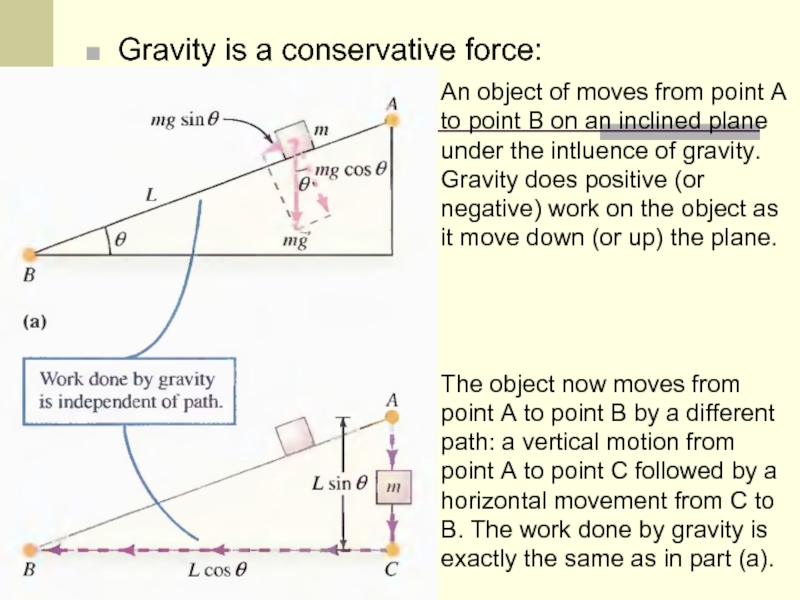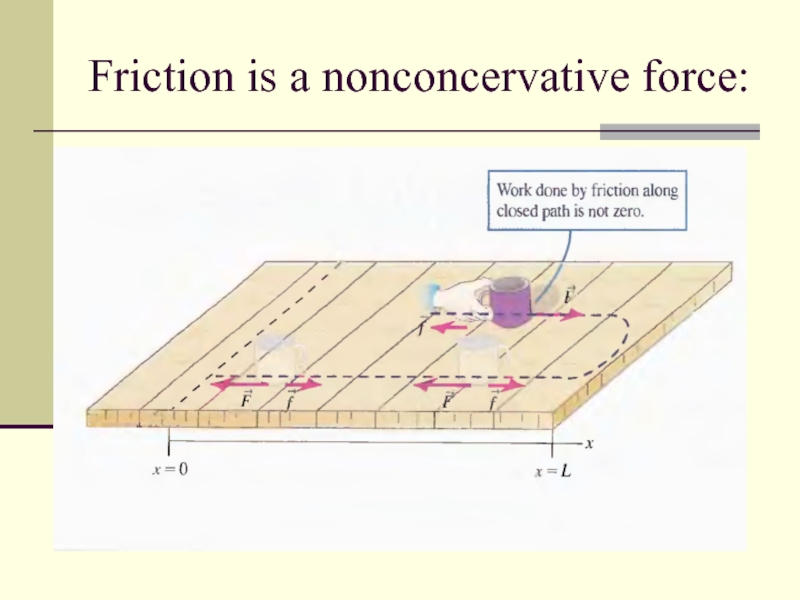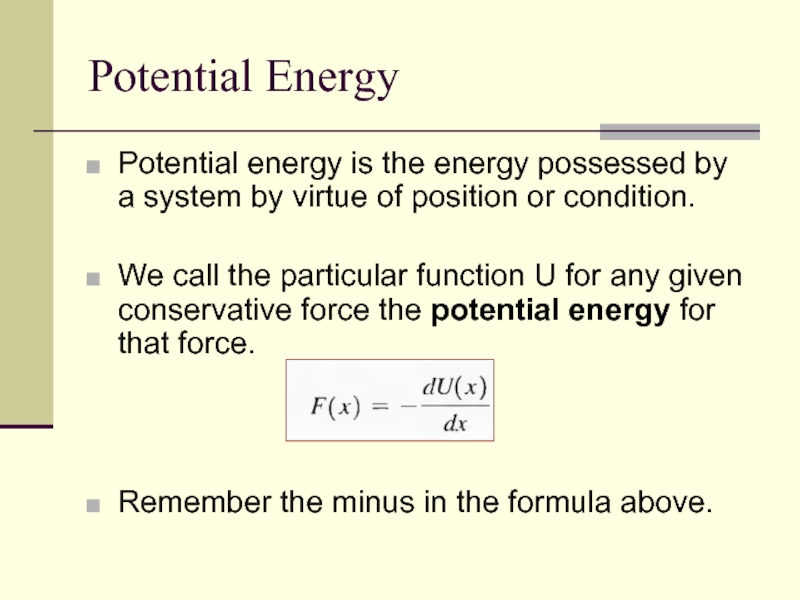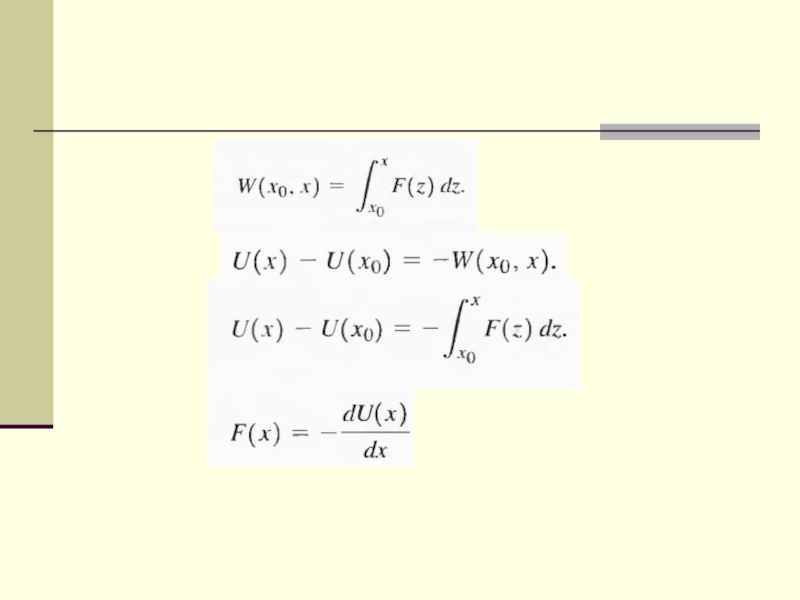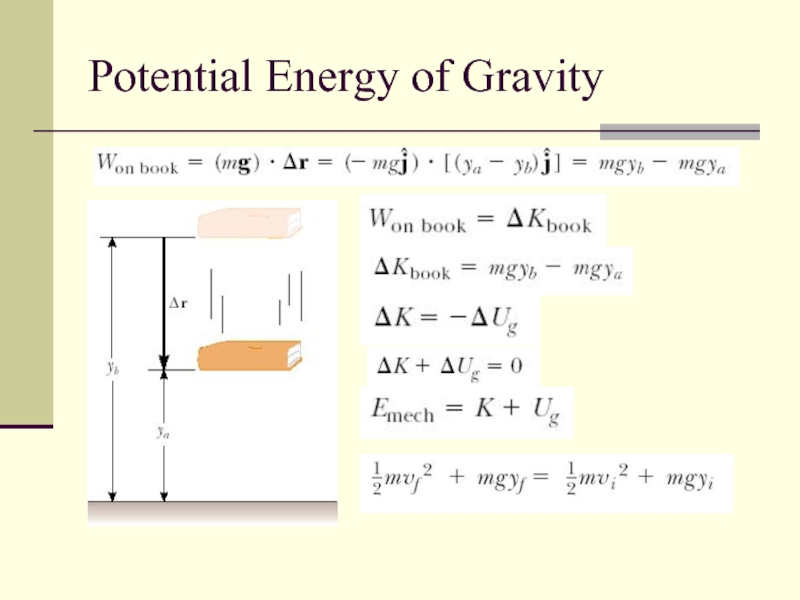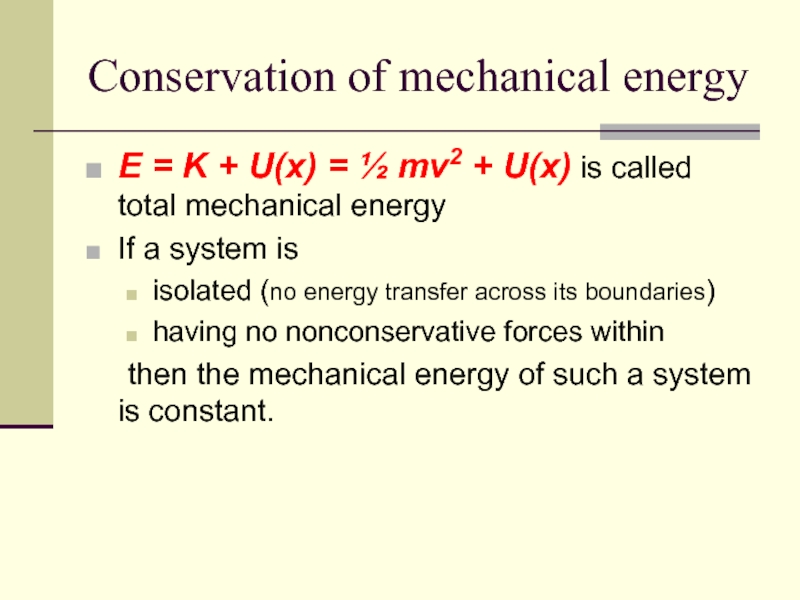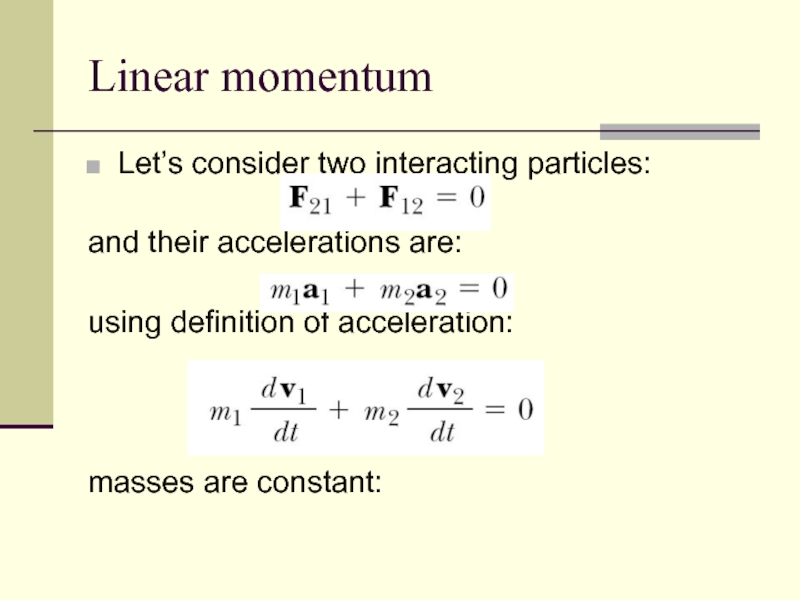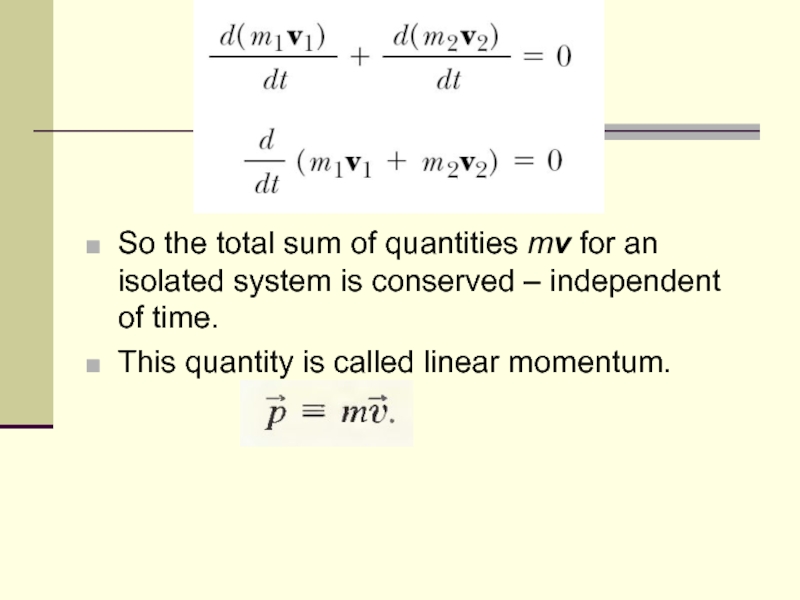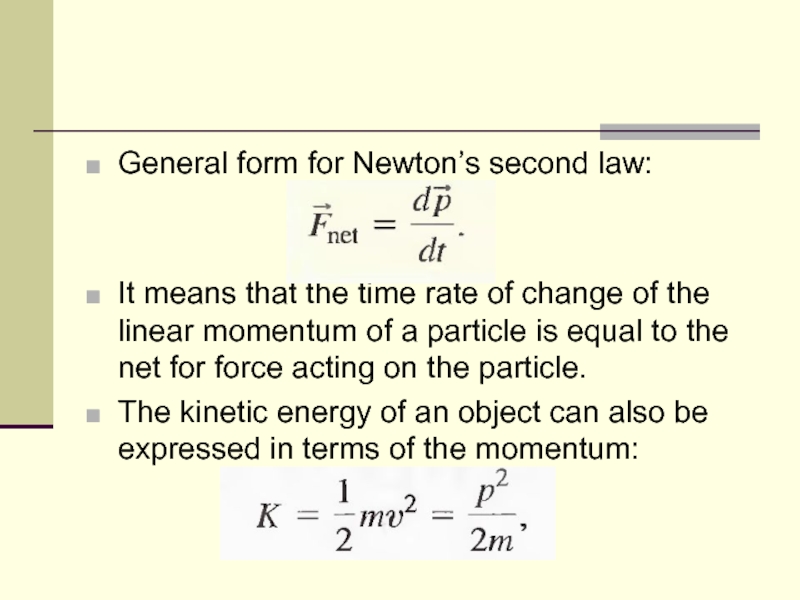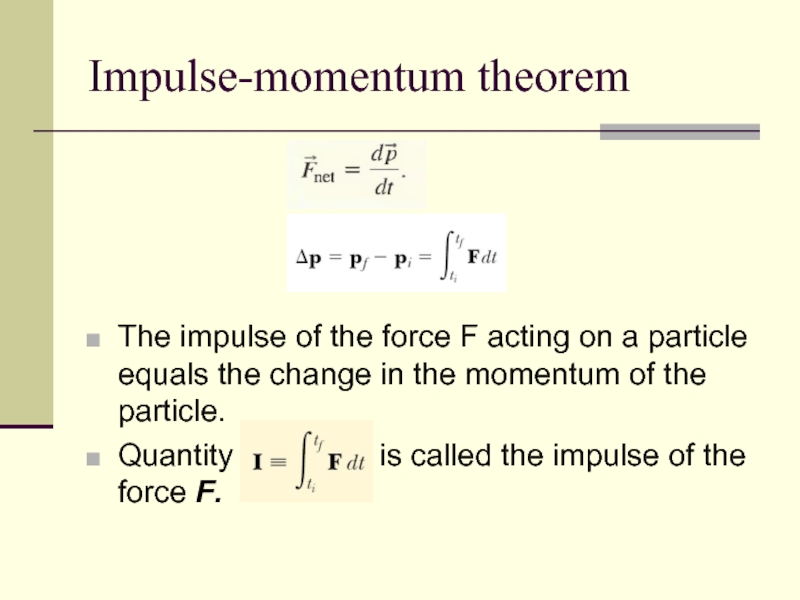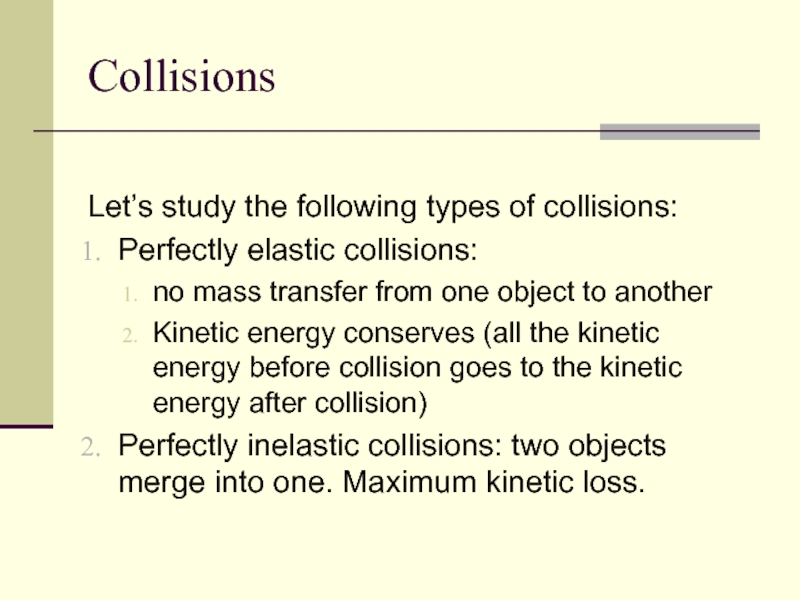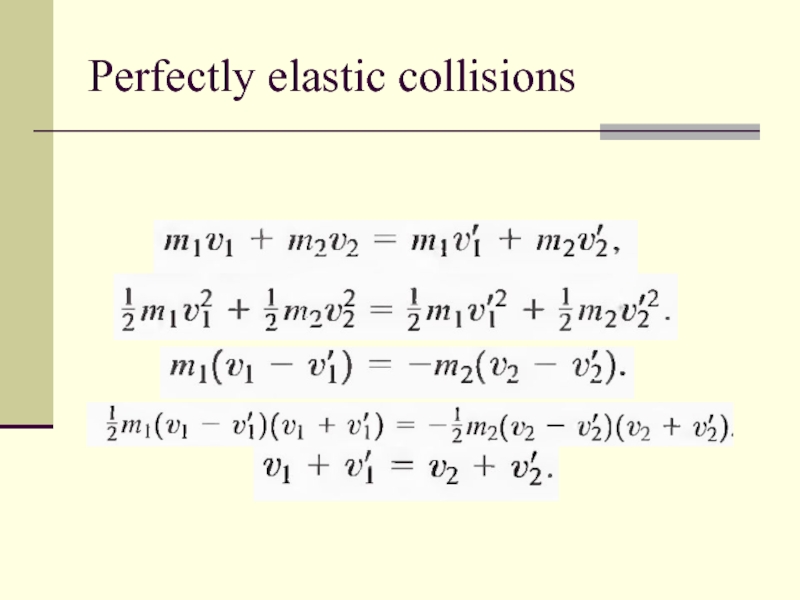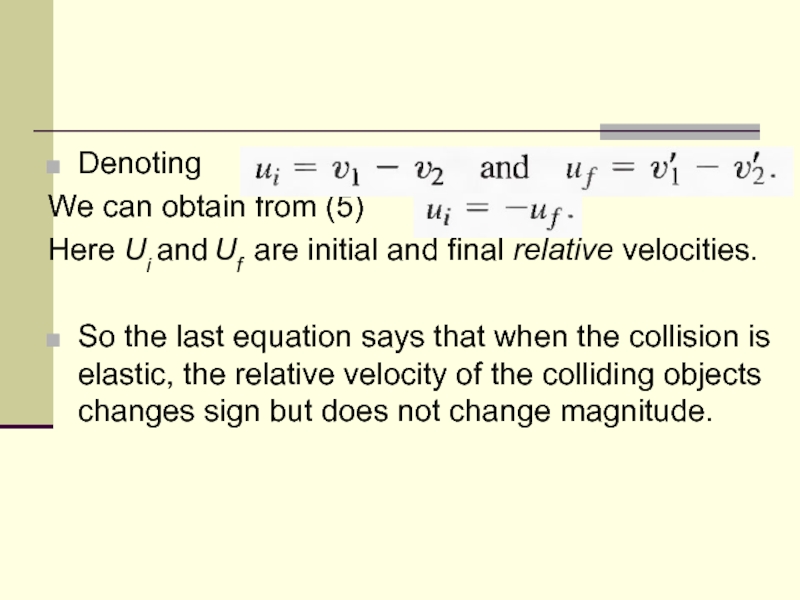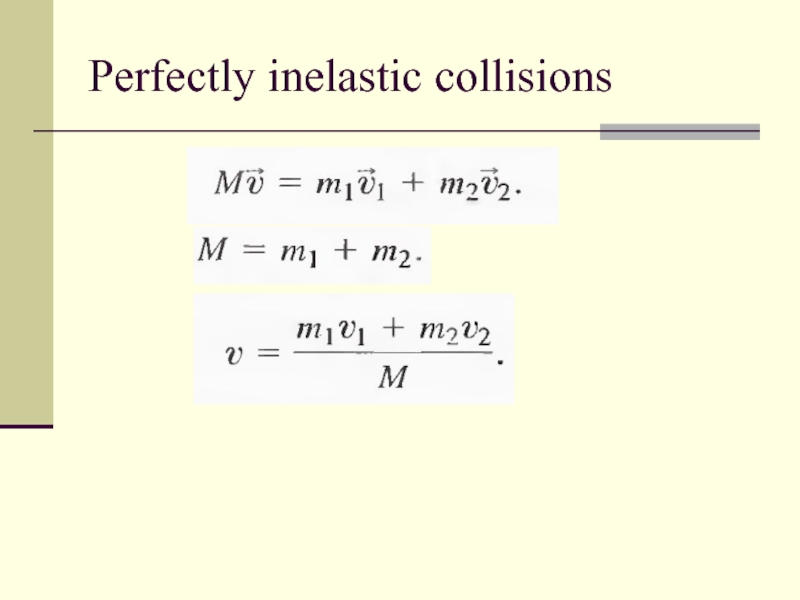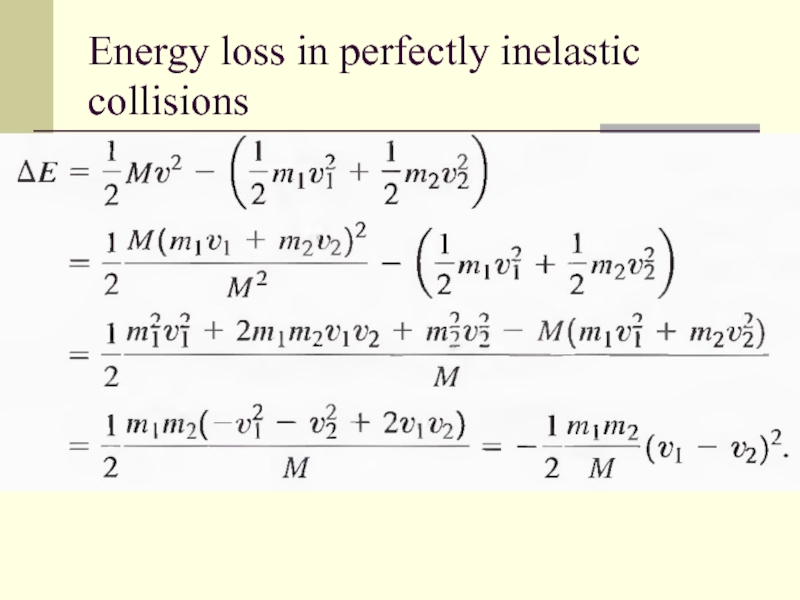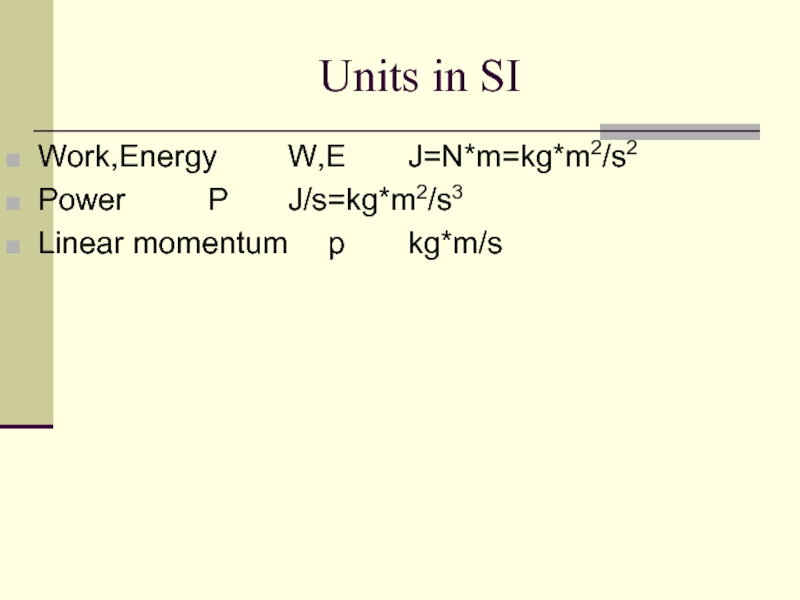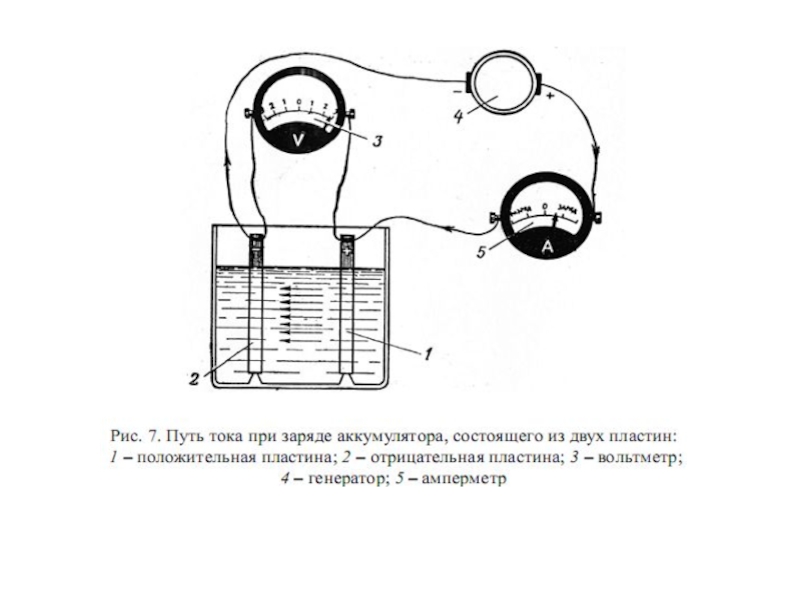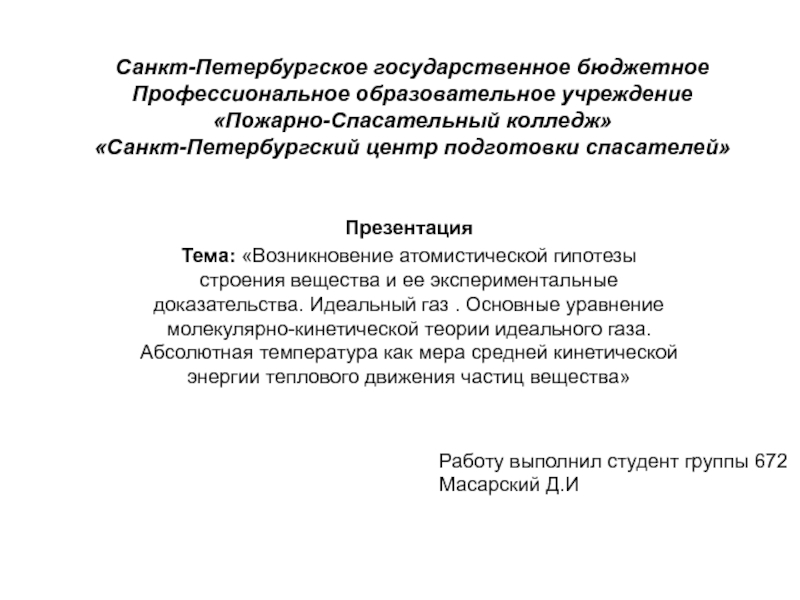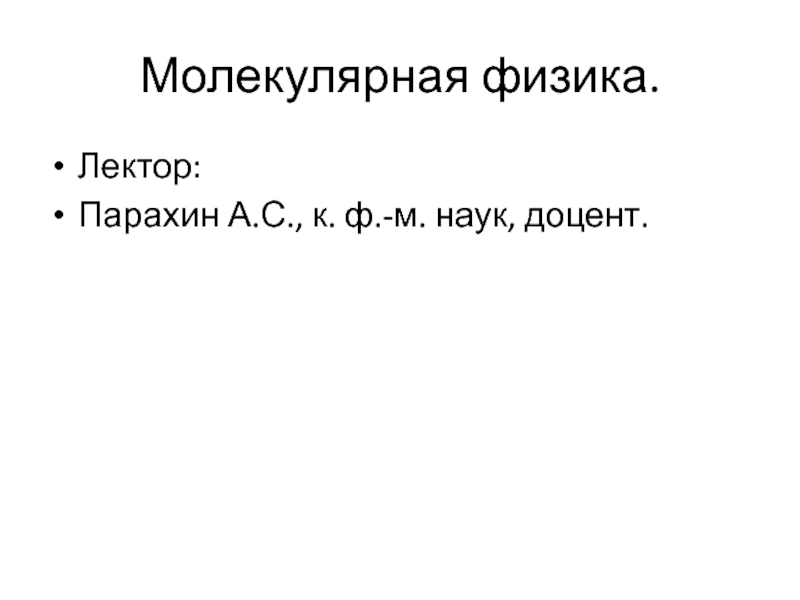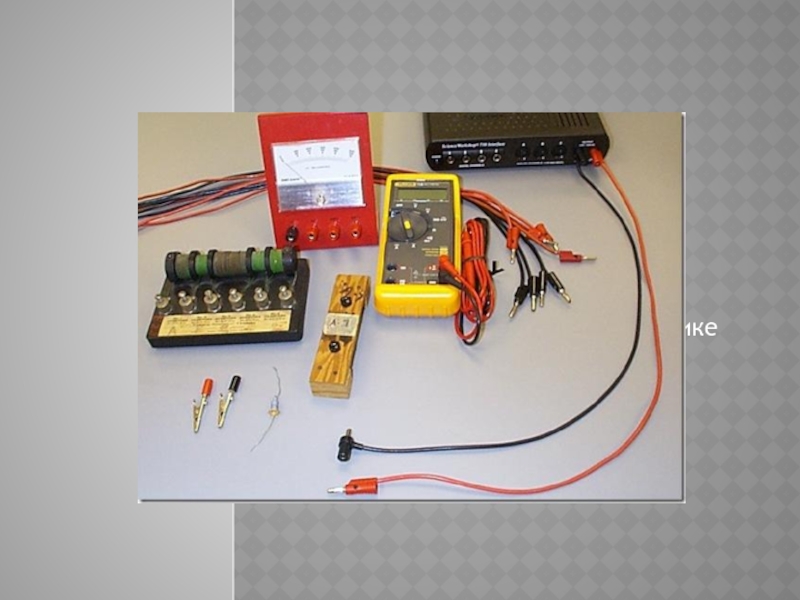- Главная
- Разное
- Дизайн
- Бизнес и предпринимательство
- Аналитика
- Образование
- Развлечения
- Красота и здоровье
- Финансы
- Государство
- Путешествия
- Спорт
- Недвижимость
- Армия
- Графика
- Культурология
- Еда и кулинария
- Лингвистика
- Английский язык
- Астрономия
- Алгебра
- Биология
- География
- Детские презентации
- Информатика
- История
- Литература
- Маркетинг
- Математика
- Медицина
- Менеджмент
- Музыка
- МХК
- Немецкий язык
- ОБЖ
- Обществознание
- Окружающий мир
- Педагогика
- Русский язык
- Технология
- Физика
- Философия
- Химия
- Шаблоны, картинки для презентаций
- Экология
- Экономика
- Юриспруденция
Work, energy and power. Conservation of energy. Linear momentum. Collisions презентация
Содержание
- 1. Work, energy and power. Conservation of energy. Linear momentum. Collisions
- 2. Lecture 3 Work, energy and power
- 3. Work A force acting on an object
- 4. When an object is displaced
- 5. Work Units
- 6. Work done by a varying force
- 8. Work done by a spring If the
- 11. Work of a spring So the work
- 12. Kinetic energy Work is a mechanism for
- 13. And finally:
- 14. Work-energy theorem:
- 15. Conservative and Nonconcervative Forces Forces for which
- 16. Examples Conservative Forces: Spring central forces
- 17. Gravity is a conservative force: An
- 18. Friction is a nonconcervative force:
- 19. Power Power P is the rate at which work is done:
- 20. Potential Energy Potential energy is the energy
- 22. Potential Energy of Gravity
- 23. Conservation of mechanical energy E = K
- 24. Linear momentum Let’s consider two interacting particles:
- 25. So the total sum of
- 26. General form for Newton’s second law:
- 27. The law of linear momentum conservation The
- 28. Impulse-momentum theorem The
- 29. Collisions Let’s study the following types
- 30. Perfectly elastic collisions
- 31. Denoting We can obtain from (5)
- 32. Perfectly inelastic collisions
- 33. Energy loss in perfectly inelastic collisions
- 34. Units in SI Work,Energy W,E J=N*m=kg*m2/s2 Power P J/s=kg*m2/s3 Linear momentum p kg*m/s
Слайд 4
When an object is displaced on a frictionless, horizontal surface,
the normal force n and the gravitational force mg do no work on the object. In the situation shown here, F is the only force doing work on the object.
Слайд 8Work done by a spring
If the spring is either stretched or
compressed a small distance from its unstretched (equilibrium) configuration, it exerts on the block a force that can be expressed as
Слайд 12Kinetic energy
Work is a mechanism for transferring energy into a system.
One of the possible outcomes of doing work on a system is that the system changes its speed.
Let’s take a body and a force acting upon it:
Using Newton’s second law, we can substitute for the magnitude of the net force
and then perform the following chain-rule manipulations on the integrand:
Let’s take a body and a force acting upon it:
Using Newton’s second law, we can substitute for the magnitude of the net force
and then perform the following chain-rule manipulations on the integrand:
Слайд 13
And finally:
This equation was generated for the specific situation of one-dimensional
motion, but it is a general result. It tells us that the work done by the net force on a particle of mass m is equal to the difference between the initial and final values of a quantity
Слайд 15Conservative and Nonconcervative Forces
Forces for which the work is independent of
the path are called conservative forces.
Forces for which the work depends on the path are called nonconservative forces
The work done by a conservative force in moving an object along any closed path is zero.
Forces for which the work depends on the path are called nonconservative forces
The work done by a conservative force in moving an object along any closed path is zero.
Слайд 16Examples
Conservative Forces:
Spring
central forces
Gravity
Electrostatic forces
Nonconcervative Forces:
Various kinds of Friction
Слайд 17Gravity is a conservative force:
An object of moves from point
A to point B on an inclined plane under the intluence of gravity. Gravity does positive (or negative) work on the object as it move down (or up) the plane.
The object now moves from point A to point B by a different path: a vertical motion from point A to point C followed by a horizontal movement from C to B. The work done by gravity is exactly the same as in part (a).
The object now moves from point A to point B by a different path: a vertical motion from point A to point C followed by a horizontal movement from C to B. The work done by gravity is exactly the same as in part (a).
Слайд 20Potential Energy
Potential energy is the energy possessed by a system by
virtue of position or condition.
We call the particular function U for any given conservative force the potential energy for that force.
Remember the minus in the formula above.
We call the particular function U for any given conservative force the potential energy for that force.
Remember the minus in the formula above.
Слайд 23Conservation of mechanical energy
E = K + U(x) = ½ mv2
+ U(x) is called total mechanical energy
If a system is
isolated (no energy transfer across its boundaries)
having no nonconservative forces within
then the mechanical energy of such a system is constant.
If a system is
isolated (no energy transfer across its boundaries)
having no nonconservative forces within
then the mechanical energy of such a system is constant.
Слайд 24Linear momentum
Let’s consider two interacting particles:
and their accelerations are:
using definition of
acceleration:
masses are constant:
masses are constant:
Слайд 25
So the total sum of quantities mv for an isolated system
is conserved – independent of time.
This quantity is called linear momentum.
This quantity is called linear momentum.
Слайд 26
General form for Newton’s second law:
It means that the time rate
of change of the linear momentum of a particle is equal to the net for force acting on the particle.
The kinetic energy of an object can also be expressed in terms of the momentum:
The kinetic energy of an object can also be expressed in terms of the momentum:
Слайд 27The law of linear momentum conservation
The sum of the linear momenta
of an isolated system of objects is a constant, no matter what forces act between the objects making up the system.
Слайд 28Impulse-momentum theorem
The impulse of the force F acting on a particle
equals the change in the momentum of the particle.
Quantity is called the impulse of the force F.
Quantity is called the impulse of the force F.
Слайд 29Collisions
Let’s study the following types of collisions:
Perfectly elastic collisions:
no mass
transfer from one object to another
Kinetic energy conserves (all the kinetic energy before collision goes to the kinetic energy after collision)
Perfectly inelastic collisions: two objects merge into one. Maximum kinetic loss.
Kinetic energy conserves (all the kinetic energy before collision goes to the kinetic energy after collision)
Perfectly inelastic collisions: two objects merge into one. Maximum kinetic loss.
Слайд 31
Denoting
We can obtain from (5)
Here Ui and Uf are initial and
final relative velocities.
So the last equation says that when the collision is elastic, the relative velocity of the colliding objects changes sign but does not change magnitude.
So the last equation says that when the collision is elastic, the relative velocity of the colliding objects changes sign but does not change magnitude.
